Fact. A whopping 92% of the people who visit your site aren’t ready to make a purchase just yet. Yes. They might have an interest and eventually convert, but they aren’t ready to make the leap of faith the first time they come to your site. It’s tough, isn’t it?
No worries, though. That is where Facebook retargeting can help you.
With Facebook retargeting, you can reach people who have already shown interest in your brand by visiting your website, scrolling through your app, or engaging with your social media profiles. It can help you boost your online conversion rate and increase your sales.
Below, we’ll explain the benefits of Facebook retargeting and explain how you can integrate it effectively into your next Facebook ad campaign.
How does Facebook retargeting work?
You’ve most likely come across them. Suppose you’re doing some online shopping and looking at a particular clothing brand. The designs spark your interest, but you aren’t ready to buy yet, so you leave the website. Then, when you scroll through your Facebook feed, you see an ad for that same clothing brand.
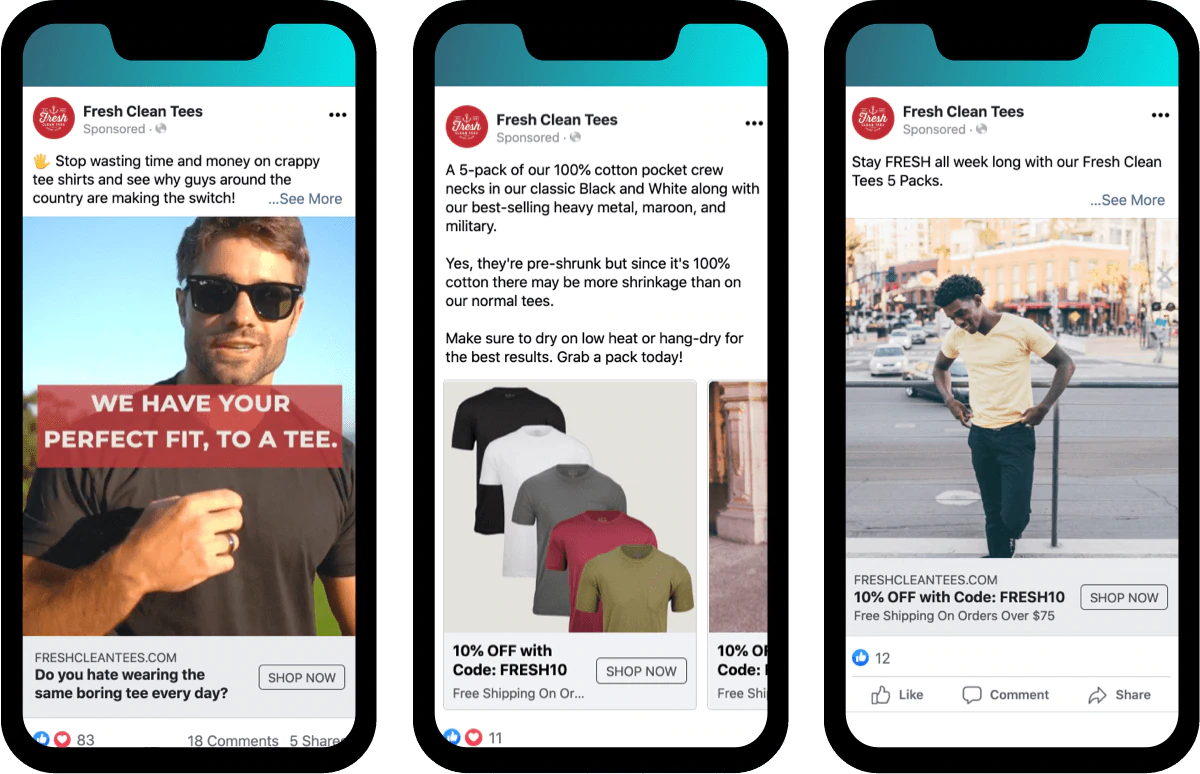
Source: cdn.shopify.com
The strategy that sees those ads mysteriously follow you around Facebook after visiting a website or clicking a Facebook ad is Facebook retargeting. It is a tactic where you target the people who have already engaged with your brand, persuading them to reconsider your offer when they need it. Here’s how it works:
When users visit your site or interact with your brand, they get “cookied” or “tagged.” To remarket to these visitors, a code is placed on the page the user visits, which prompts your ads to follow the cookied users as they scroll on Facebook. Your ad pops up to remind them what they are missing.
Getting started with Facebook retargeting
Facebook’s advertising prowess is primarily due to its massive user base. Research by Statista has it that Facebook boasts over 2.9 billion active monthly users. The users provide Facebook’s advertising platform with a wealth of data. You can use this data to ensure your ads have laser-focused precision.
Before launching your ad campaign, you need to create your retargeting audience. Facebook makes this process simple. Log into your Ad Manager account and navigate to the Audiences tab. Click “Create Audience” and then “Custom” from the drop-down menu.
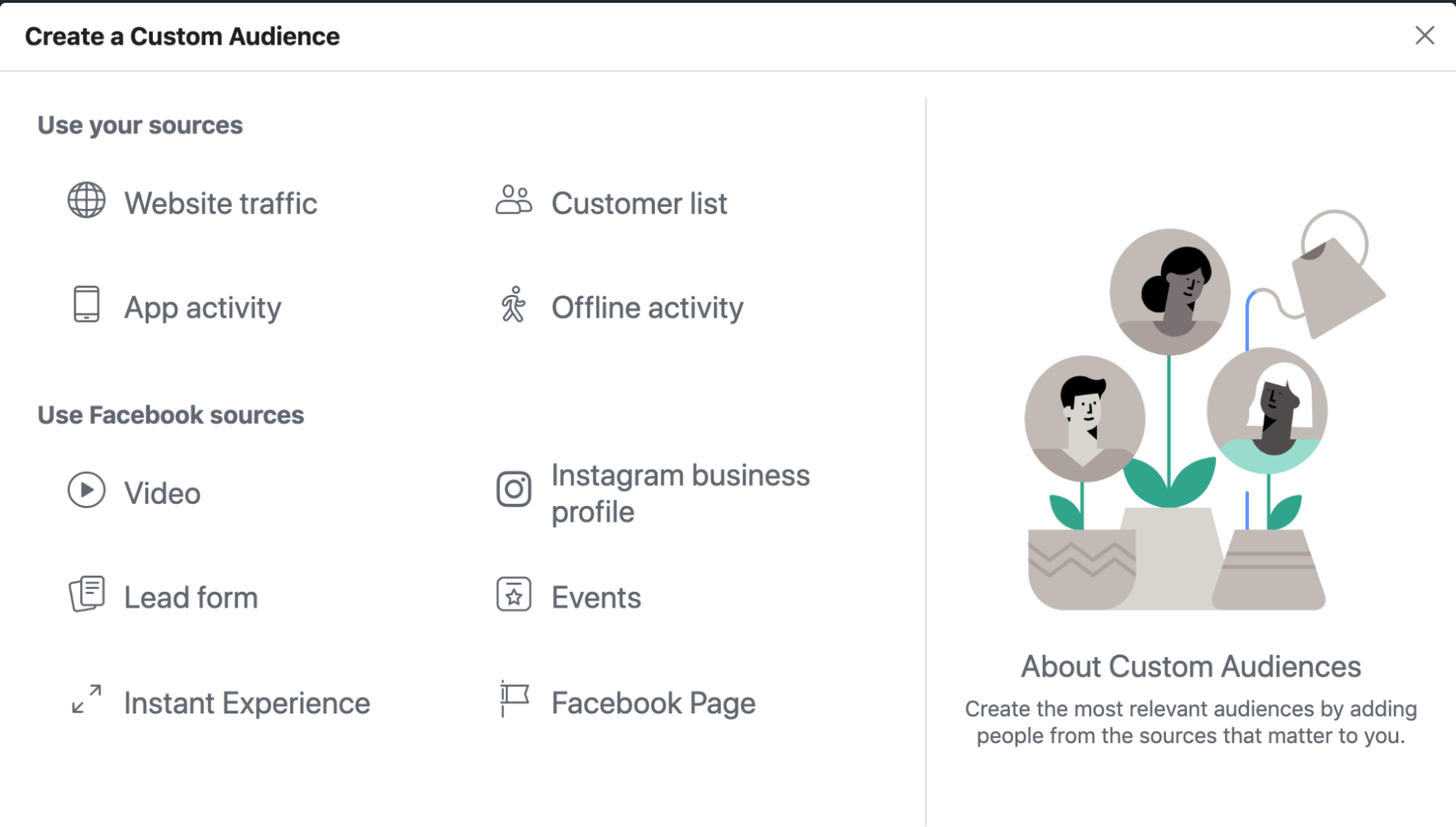
Source: images.ctfassets.net
In the Custom Audiences section, you can choose from several options, which include:
A customer file – You can manually upload a list of leads you’ve already generated using this option. It could be past clients or prospects who attended your recent trade fair. Retargeting this audience is a piece of cake since Facebook matches this list of names with their Facebook profiles.
Website traffic – The first step in creating a visitors list for remarketing purposes is to embed a Facebook pixel on your website. It’s a handy tool that enables Facebook to track visitors to your website and automatically retarget them.
App activity – If your business has an app, you can create a custom audience for users who take specific actions within it.
Facebook engagement – Lastly, you can retarget an audience of people who have engaged directly with your business on Facebook. Maybe they liked a post, followed your page, or commented on a video.
You can add additional targeting preferences too. For instance, you could set a specific retargeting time frame, say a month. That will help you reach people who have engaged with your brand recently before they forget about their potential purchase.
Create an effective retargeting ad
Once you’ve set the ball rolling, you can launch a retargeting ad campaign that uses your target audience.
The click-through rate (CTR) of a retargeted ad is ten times higher than that of a typical display ad. That means retargeting campaigns perform ten times better than regular display banners. They also offer better opportunities to convert website visitors than traditional display advertising strategies.
So, how do you go about creating retargeting ads?
Customize your ads to your retargeted audience. The messaging that works on a more generic audience may not achieve the same results when used in a retargeting capacity.
Try to change the keyword strategy as well. Also, feature a strong Call-to-Action (CTA) to prompt the user to take the next step.
Check this out:
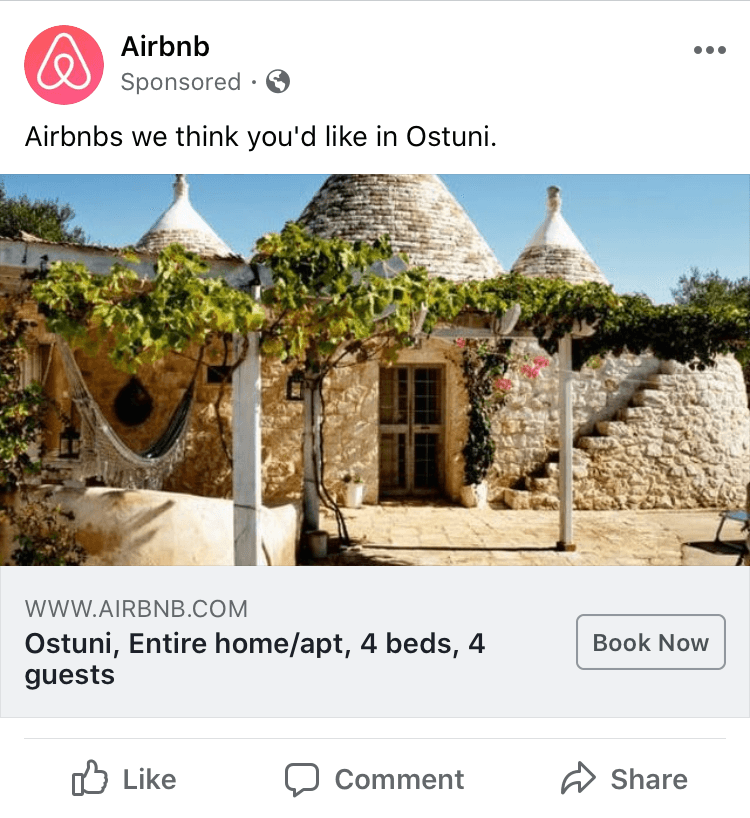
Source: www.webfx.com
This retargeting ad example came from Airbnb and appeared after a potential customer viewed a few listings in Ostuni. Notice how the ad makes it easy to complete a booking with the CTA “Book Now.” That is an excellent approach to remind people about your services and direct them to your website to accomplish the desired action.
Not all retargeting ads thrive, so be sure to A/B test different ad versions. In addition, Facebook has strict policies on grammar and profanity. Be sure to check the grammar and punctuation of your ads to pass Facebook’s ad review process.
Consider expanding into different retargeting ad forms:
Abandoned cart retargeting: These are for potential clients who fail to complete the purchase after adding items to the cart.
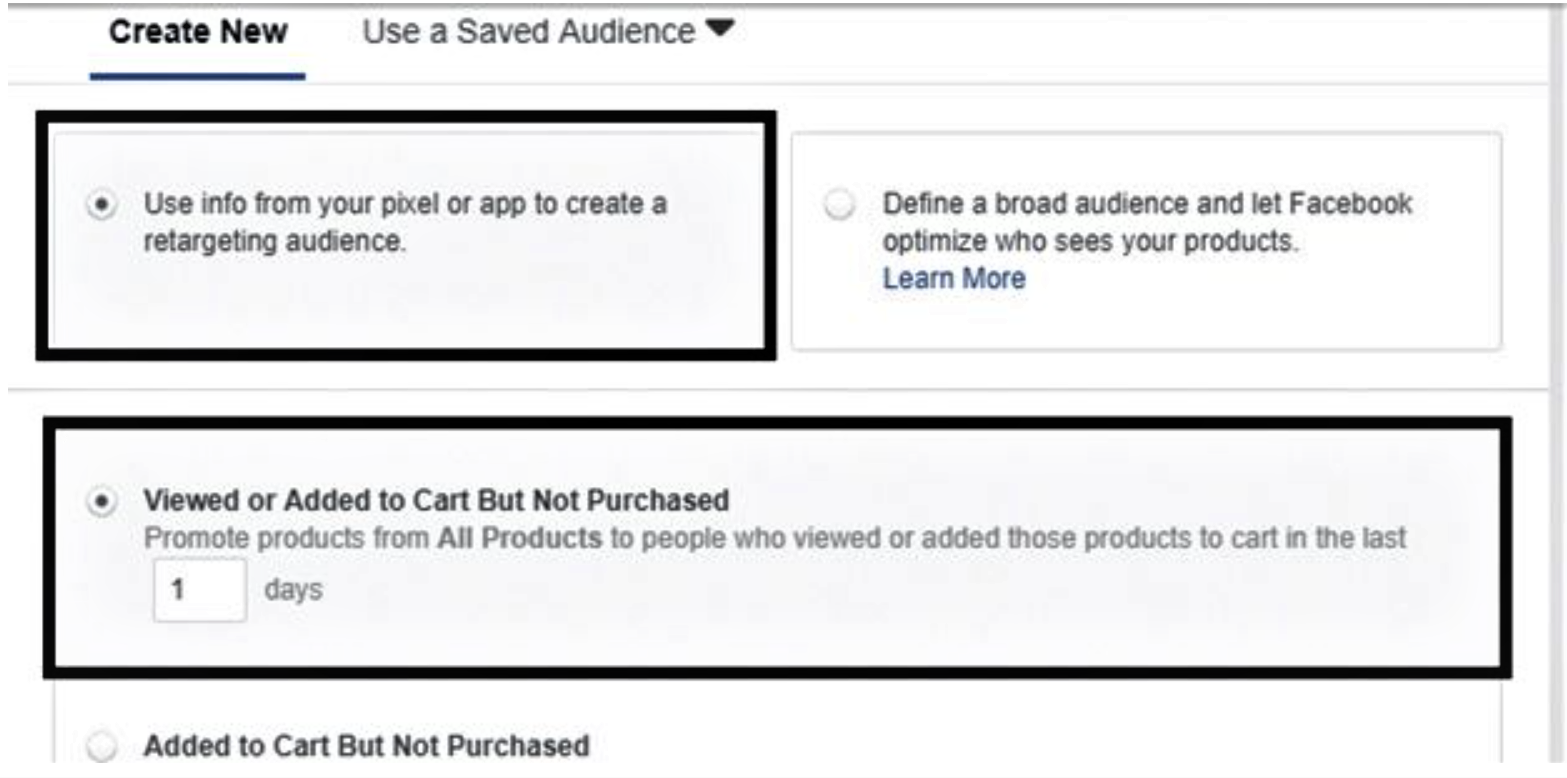
Source: ecomdash.com
To reduce the cart abandonment rate, re-engage the prospects with ads containing the products they added to their cart.
Native retargeting: Make your display retargeting ads more versatile. You can use ad retargeting audiences to provide native ads that are more personalized and allow for more A/B testing, making them more effective.
Video/audio retargeting: If you are running engaging video or audio campaigns, create display ads that serve audiences who have viewed or listened to those ads. This helps you reach those same audiences sequentially.
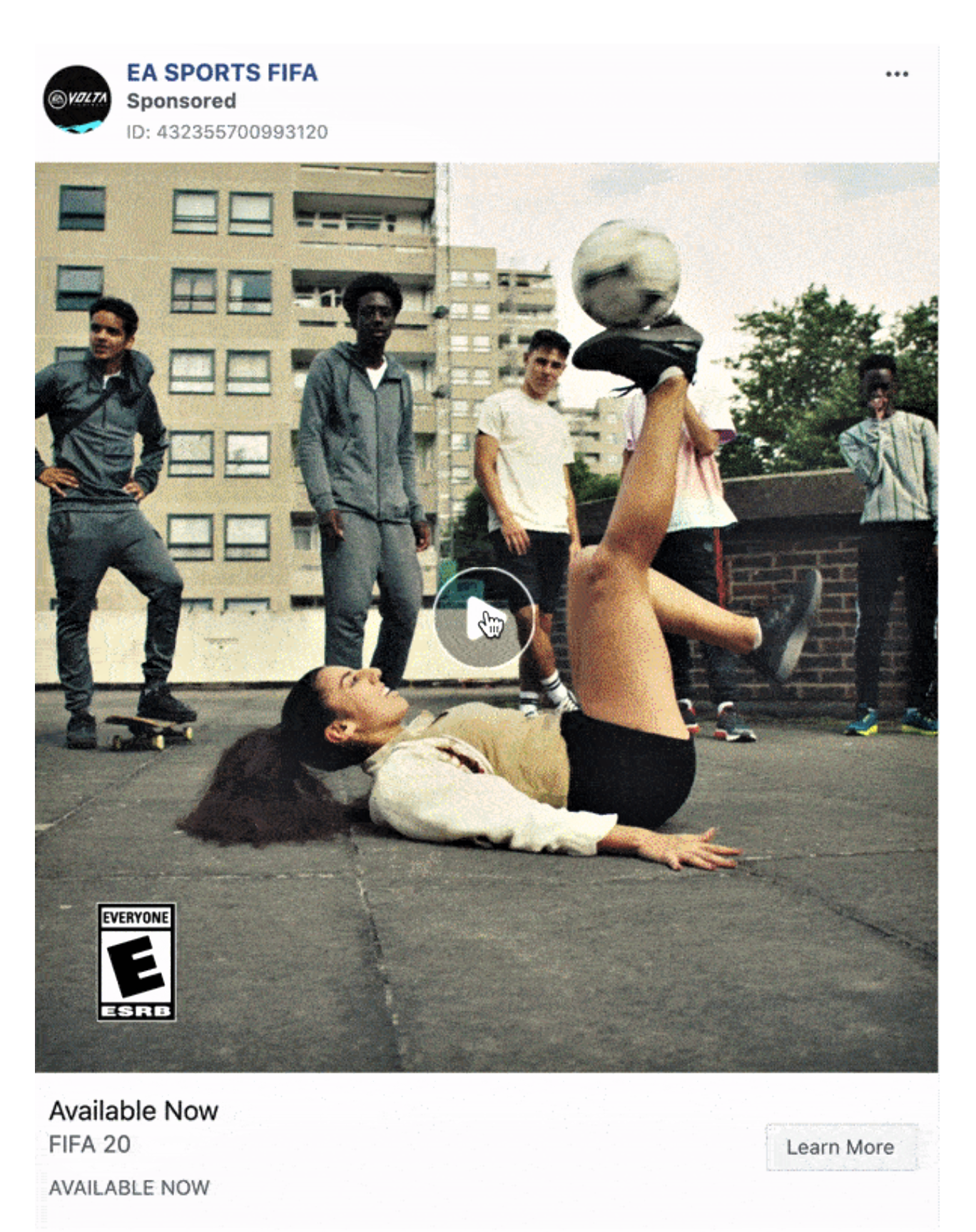
Source: sh1ftdigital.com
EA Sports, a leading soccer video game, created this ad to make potential customers picture what it’s like to own the product. They make it an experience so that when the target audience sees the ad, they visualize themselves playing the game. It taps into emotions to drive more engagements and conversions.
Dynamic retargeting: Dynamic retargeting presents ads to proactive hand-raisers using advanced Facebook pixel algorithms. It’s a particularly effective strategy for e-commerce enterprises with a vast inventory and a large market share. Here’s a visual representation of how it all works.

Source: unific.com
You don’t have to use all the Facebook ad options discussed above at once. Just choose the ones that work the best for you.
Ready? Go Live
Once you have your Facebook retargeting ads ready, it’s time to go live. After your retargeting campaign has started, find out how your ads are performing. Facebook can help your business understand which types of ads are getting the most engagement from your remarketing audience.
You also need to monitor your Facebook retargeting ads for metrics such as return on investment, conversion rate, and page views, among others.
With paid ads, in particular, you can generate analytics reports easily with Sotrender Ads. Sotrender Ads can generate critical data about your paid campaigns in less than 60 seconds. Some of the indicators you can track with this great tool are reach, CPC, CPM, views, and audience share.
With Sotrender Ads, you can also see how you’re doing compared to your competitors according to the campaign goal you choose, whether that’s Awareness, Consideration or Conversion. The tool can also help you determine comment sentiment, which is a great metric to monitor since it can help you determine what members of your audience want and how they behave. Mind you, this is a metric you can’t analyze for free in Facebook Ads Manager.
Keeping track of how your campaign is doing will help you identify the modifications you can make to optimize your campaign.
The good thing with Facebook is that anytime somebody sees at least three seconds of a video (recorded or live), Facebook takes note of who they are and puts them into a retargeting custom audience. That means you retarget that audience again and again. When you keep that entire interaction on Facebook, it’s easy to nurture those relationships and warm people up to your brand.
Scale your retargeting strategy
When starting with retargeting, most business owners get excited and blast ads to the entire audience. They assume targeting all customers at once increases their chances of making a sale. This only serves to make your ads more expensive. It results in fewer conversions from your retargeting list.
The most important aspect of data is that it can be sliced and diced to meet virtually any of your requirements. The only thing that stands in the way of your data-driven growth ideas is your creativity. One effective approach to using data is to tailor your retargeting ads to your Facebook insights. It helps in optimizing successful campaigns to increase sales.
Here’s how to scale Facebook ads:
- Raise your ad spend
- Utilize campaign budget optimization
- Try new lookalike audiences
- Target more geographic locations
- Reuse your winning ads
- Target a vast audience
- Avoid audience overlap
- Switch offers within the same campaign
You can get a glimpse into how your Facebook retargeting campaigns are doing by monitoring and adjusting accordingly.
Conclusion
Facebook has quickly become one of the most powerful tools in digital marketing. Thanks to its vast amount of data and tracking capabilities, the social network’s retargeting options are second to none.
Facebook retargeting is one of the most effective ways to convert the leads interested enough to visit your website but not quite ready to purchase. Get started by launching your retargeting campaign based on your desired audience. Next, you need to create an effective retargeting ad that is compelling, engaging, and offers the right incentives to your audience.
Once your retargeting ad is set, go live and use metrics to monitor your ad performance. Finally, scale your retargeting strategy by using Facebook data to fast-track your high-performing campaigns.
It takes practice and patience to get it right. But it’s worth it.








